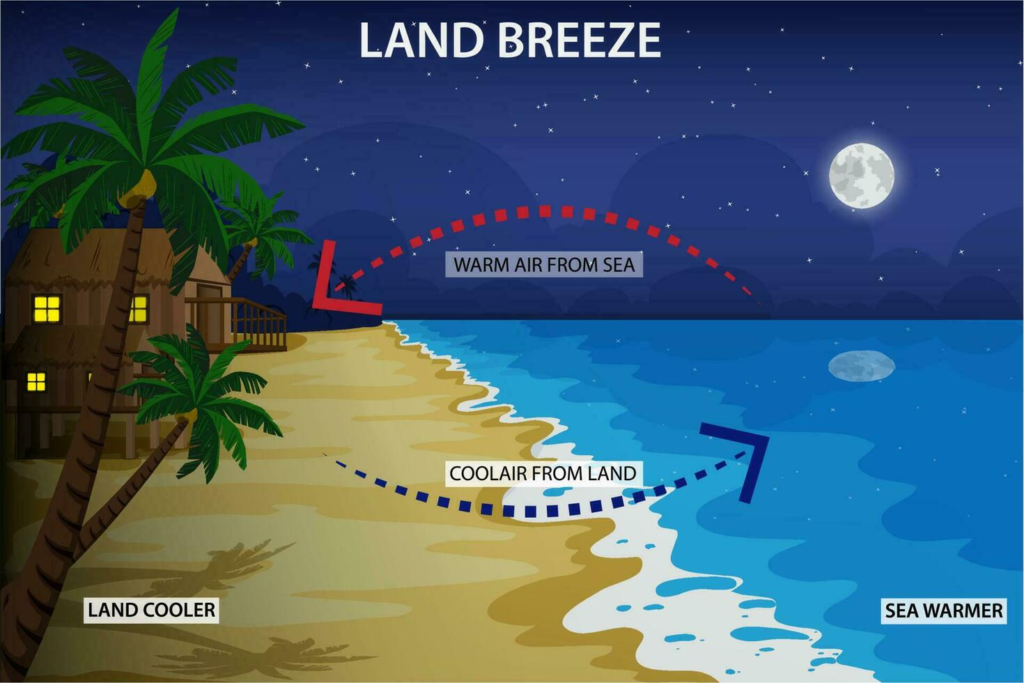What Causes Land And Sea Breezes?
key notes :
Definition of Land and Sea Breezes:
- A land breeze is wind blowing from the land to the sea during the night.
- A sea breeze is wind blowing from the sea to the land during the day.
Why Do They Happen?
- The land and water heat up and cool down at different rates.
- Land heats up and cools down faster than water.
Sea Breeze (Daytime):

- During the day, the land becomes hotter than the sea.
- Warm air over the land rises, creating low pressure.
- Cool air from the sea moves in to replace the rising warm air. This is called a sea breeze.
Land Breeze (Nighttime):

- At night, the land cools down faster than the sea.
- The air over the sea is warmer and rises, creating low pressure over the sea.
- Cool air from the land moves toward the sea to replace the rising warm air. This is called a land breeze.
Role of Air Pressure:
- Warm air rises because it is lighter, creating low pressure.
- Cool air sinks because it is heavier, creating high pressure.
- The difference in air pressure causes the movement of air, which we feel as wind.
Examples in Daily Life:
- Sea breezes make coastal areas cooler during the day.
- Land breezes are more common during calm nights.
Fun Fact:
- Sailors in the past relied on sea breezes to navigate their ships along the coast.
Let’s practice!

